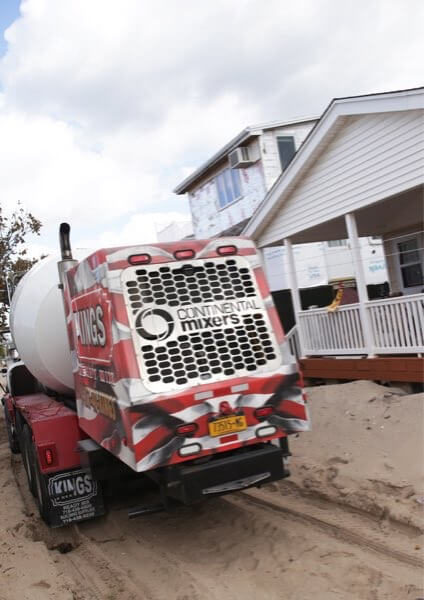By Patrick Donachie
Four years after Hurricane Sandy destroyed homes and businesses along coastal regions of Queens and the rest of the city, Mayor Bill de Blasio and the city government continue to face roadblocks assisting affected residents in rebuilding, with the city’s Build it Back program over budget by hundreds of millions of dollars.
Earlier this month Build it Back director Amy Peterson told the New York City Council’s Committee on Recovery and Resiliency, which oversees the program, that $500 million more would be needed to fully fund Build it Back. This will mark the first time city money has been used for the program, which had previously been funded with $1.7 billion in federal support. The funds would be drawn from federally funded coastal protection programs, according to the Council’s Committee Report for its October meeting, and city funding would fill the gap in those needs. Peterson said no Build it Back programs would be delayed by the shift in funding.
De Blasio also announced the city would not meet the deadline to complete construction on all Build it Back single-family homes by the end of 2016, a goal he set in October 2015. De Blasio did announce that 68 percent of Build it Back homes have commenced construction, with 44 percent of construction completed. For single-family construction, those numbers stand at 76 percent and 54 percent, respectively. De Blasio’s office said there were 4,016 remaining single-family construction projects.
The Build it Back program was created by former Mayor Michael Bloomberg in June 2013 to help homeowners in the city repair their residences from damage incurred during Sandy. Depending on the location and damage to these homes, they could be repaired, rebuilt or elevated to avoid flooding. Some homeowners were even offered acquisition payments from the city.
To date there were 9,047 initial applicants for Build it Back assistance from single-family homes in Queens, by far the highest of any borough, according to the city’s Sandy Funding Tracker. Afterwards 4,150 awards were selected with 1,395 construction projects started and 825 completed. The funding tracker says 2,366 reimbursement checks were sent out in Queens.
In an October hearing Councilman Mark Treyger (D-Brooklyn), chairman of the Committee on Recovery, decried the program’s status. Peterson testified the program was currently assisting about 8,500 applicants, far less than the initial 22,000 applicants Treyger cited.
“Clearly, we are spending more than originally anticipated and only assisting under half of the original applicant pool,” he said. “How do we reconcile that?”
Hurricane Sandy barrelled into New York City on Oct. 29, 2012, killing 12 people in Queens and causing billions of dollars in property damage. Breezy Point, Broad Channel, parts of Howard Beach and the Rockaways were hardest hit, and communities in southeastern Brooklyn and along the east shore of Staten Island were also pummelled. In the progress report the mayor released this month announcing the deadline would not be met, he said more than 90 percent of program participants will have received checks and/or started construction by the end of the year.
Peterson contended during testimony that setting a deadline had accelerated the pace of recovery beyond what it would have been. Committee members worried that the deadline had compromised safety and standards in construction, and that contractors might have inflated their prices in response to the deadline.
“When you have firms that are, quite frankly, jacking up prices, konwing that market conditions somehow favor them jacking up prices, that’s not right either,” Treyger said during the hearing. “They’re price gouging, and it’s very hard to justify spending over a million dollars to elevate a home that is still in significant risk, that is worth about $300,000.”
Peterson asserted Build it Back would reject bids that were deemed to be too high.
Councilman Donovan Richards (D-Laurelton), a member of the Council’s recovery committee, said the delay was not surprising, though he contended de Blasio and Peterson were far more committed to outreach than the previous administration. Richards said he was frustrated with the difficulty in getting information about oversight conducted on contractors. He also said Build it Back construction was sometimes delayed because homes had pre-Sandy Buildings Department violations, and he maintained it was important to monitor the work of independent contractors. A Council vote on the issue was expected this week.
“You hear it around the city that no one’s touched a house in four months,” he said. “We want to make sure they’re not delaying work.”
State Sen. Joseph Addabbo (D-Howard Beach), in an interview with TimesLedger staff, said the deadlines instituted by the mayor had done more harm than good. He recalled a conversation he had with Peterson about the deadline.
“I told her, don’t use deadlines, because my people are all maxed out, financially and emotionally,” he said. “You are done when everybody’s recovered. That’s your deadline.”
Despite the extensive and convoluted process of rebuilding and elevating affected homes, Richards and others acknowledge that some homes would always be in danger of flooding due to their location and the danger caused by rising sea levels and storm severity. Peterson noted that Build it Back was increasing its acquisition incentive level to $650,000, a jump of $150,000. In the case of acquisition, the city would effectively offer homeowners a buyout to relocate, a practice Treyger said had not been promoted throughout the city at the outset of the program.
“That’s something that should have been advertised at the beginning of the program, and not so late in the game,” he said during the hearing.
As Build it Back continues, homeowners throughout Queens and the city continue to wait for the end to construction, with some still unable to return to their homes. Richards said the immensity of the undertaking continues to be one of the most difficult aspects of the city’s road back from Sandy, from the challenges of rebuilding with resiliency in mind to trying to elevate attached homes above potential flood levels.
“We’ve got to talk about the glaring infrastructure issues,” he said. “If there’s another storm, where do people go?”
Reach reporter Patrick Donachie by e-mail at pdona


































